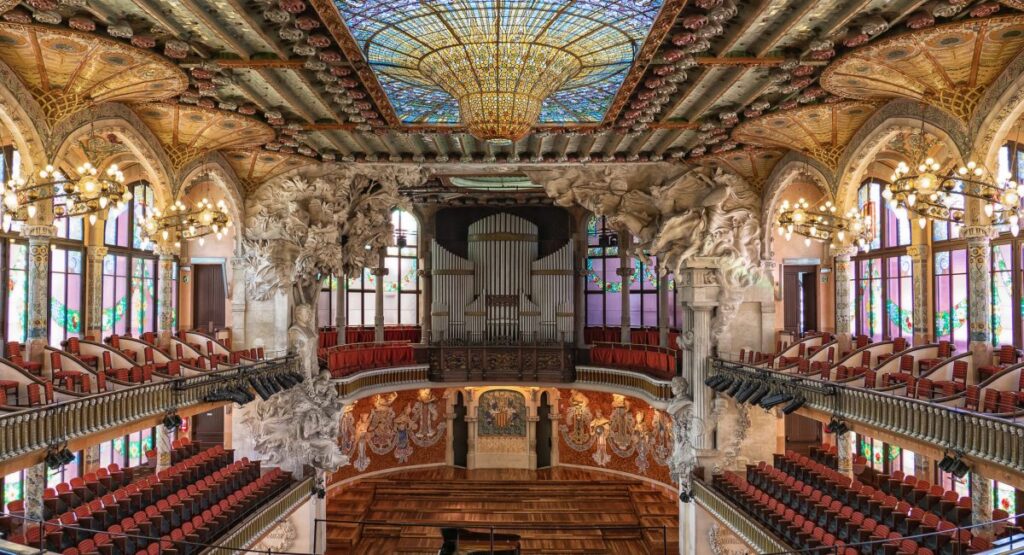According to the book «Barcelona palimpsest» by Joan Barril – a Barcelona native as well as a famous journalist and a writer – this building and its entire life is mysterious and vibrant. This place attracts people who feel passionate about art and have a fine taste in music. Palau de la Música impresses visitors by both its internal and external design, pleasing both eye and ear.
Palau de la Música was designed by the architect Lluís Domènech and constructed between 1905 and 1908. The Catalan Music Palace is an official UNESCO World Heritage Site. When conceived it adopted various architectural forms such as mosaic, sculpture, ironwork and stained glass. It is a work of art in itself and it houses all the possible forms and displays of art within the concept.
Another protagonist of this blog is the statue of Carmela – a faithful admirer of the Music Palace. Carmela appeared near Palau de la Música quite recently, in 2016. The sculpture was supposed to remain there for some time and then be removed but the statue became very popular and beloved by the neighbours to such an extent a petition was created to keep it there indefinitely. So a temporary exhibit was converted into a permanent neighborhood gem.
In just a couple of streets towards the metro Urquinaona, there is a seemingly unassuming yet wonderful gallery called Senda. Inside is the ideal of good taste. The art gallery is situated in Trafalgar Street. Senda showcases modern art, and appreciates and supports new talents. This gallery has also exhibited Jaume Plensa’s works – that’s why it is essential to mention this spot which is no doubt worth visiting regardless of whether you are a lost traveller or an eager art collector.
In continuation of our story of the Catalan Music Palace and the architectural pearls surrounding it, we would like to note that Palau is situated in Sant Pere Més Alt Street/Palau de la Música, 4-6. The name of the Street means it is the highest of the three San Pere Streets: Més Alt (The highest), Més Baix (The Lowest), Mitjá (The Middle). All those names are in Catalan, and being aware of their spelling will help you navigate the map once you are in Barcelona.
Palau de la Música is just across from the metro Urquinaona on Vía Laietana Street. It is one of the most representative monuments of the city, hosting choral concerts, symphonic music and recitals. We highly recommend visiting Palau if you are passionate about music and art in general!




